Teacher’s Guide
SECONDARY EDUCATION
Andalusia
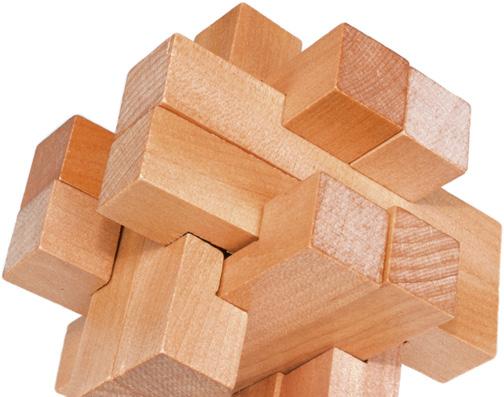
LEARNING EXPERIENCES
NATURAL NUMBERS AND INTEGERS
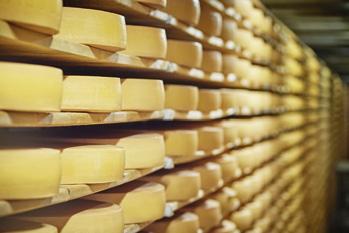
THE SET OF NATURAL NUMBERS

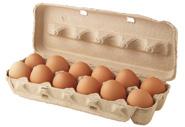


Optimisation
Videos. SDG 9: Industry, innovation and infrastructure
Quiz. Previous knowledge
SELF-ASSESSMENT

Escape room

• Decimal numeral system and the value of the digits of a number
THE RELATION OF DIVISIBILITY
• Relation of divisibility
• Multiples of a number
• Divisors of a number
PRIME AND COMPOSITE NUMBERS
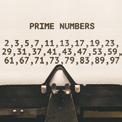
• Eratosthenes’ sieve
• Decomposing a number into prime factors

LOWEST COMMON MULTIPLE
• Lowest common multiple
GREATEST COMMON DIVISOR
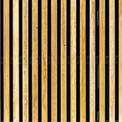
• Greatest common divisor
SQUARE ROOTS OF INTEGERS
• Other roots
• Perfect square and cube
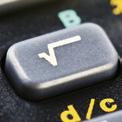
POWERS OF INTEGERS
• Powers of negative numbers
• The properties of powers

• Adding and subtracting integers
THE Z SET OF INTEGERS

• Adding and subtracting inside brackets
• Combined operations
OPERATING WITH INTEGERS
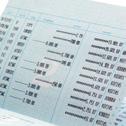
• Multiplication with integers


Opening video
anayaeducacion.es Watch the video ‘Optimisation’ about the learning experience.

SDG commitment
anayaeducacion.es Watch the videos on the sustainable development goal 9: Industry, innovation and infrastructure.

Gamification
anayaeducacion.es Do the ‘Quiz. Previous knowledge’.
Natural numbers and integers
BASIC KNOWLEDGE
• Recognising natural numbers and integers, putting them in order and representing them on the number line.
• Recognising different numeral systems and appreciating the advantages of the decimal system.
• Understanding the equivalence between different units of the sexagesimal system.
• Recognising a number as a multiple or divisor of another and applying the divisibility criteria.
• Recognising the prime numbers below 100.
• Using mental arithmetic to break down small numbers into prime factors.
• Using mental arithmetic or the student’s own methods to calculate the greatest common divisor and lowest common multiple of simple numbers.
• Performing operations containing positive and negative numbers in simple expressions with combined operations. Rule of signs. Removing brackets. Order of operations.
• Solving arithmetic problems involving several operations.
LEARNING EXPERIENCE
This left-hand page presents an activity to be designed and solved. This can be done over the learning experience, at the same time as what is being learnt, or at the end, applying and reviewing what has been learnt. The proposed activity is intended to be open-ended. It asks the students to devise a context whose resolution offers different alternatives, conditioned by quantitative data. The resolution consists of finding the best option, using the resources in the learning experience. On the first page there is an example of the type of situation for which such calculations and assessments would be necessary. Study the best way to place a pile of cheeses on certain shelves, knowing the dimensions of each one. The activities in the section 'Before you... start review what you know' will help bring clarity to the approach the students should adopt to solve the activity, and will serve to announce what is to come, activate the students' previous knowledge, and to detect possible learning gaps.
ANSWER KEY
1 Open answer.
2 I) 2 · 2 · 9 = 36 cheeses II) 2 · 1 · 17 = 34 cheeses III) 3 · 1 · 9 = 27 cheeses
3 Option I.
4 Option I holds more cheeses, helps them to keep their shape and is safer, as they do not roll around.
5 It would be possible to produce cheeses whose dimensions are divisors of the shelf dimensions. The maximum common divisor of 20, 30 and 140 is 10.
6 Cubes with 10 cm edges.
MY MATHS DICTIONARY
Key language
The answer is 781 " , seven point eight one recurring We can say 1/3 as ‘one over three’. 25/15 is 5/3 simplified / reduced / cancelled down.




Learning by doing
anayaeducacion.es Watch the video ‘Decimal numeral system and the value of the digits of a number’ to see a practical example of this.
1. The set of natural numbers
TEACHING NOTES
Natural numbers are old acquaintances of students. We insist that the concept of number is universal, unlike the way we express it, which is different in each culture depending on the degree of development and the culture’s current needs.
By analysing different numeral systems used in the past, students can value the progressive efforts made by humanity in creating tools that facilitate our existence and form part of our cultural heritage, and the continued advancement that each generation transmits to the next.
At the same time, we can say that every culture has devised a numeral system that suited their needs. We cannot imagine any situation where a primitive man, who was a hunter and gatherer, had to handle numbers of seven figures, for example. However, we only need to open a newspaper or any scientific treatise to see that those same numbers are essential in today’s society. That is, numeral systems have been refined as the need for quantifying and calculating evolved (trade, construction, statistics, etc.) and, at the same time, each advancement has enabled access to new fields of science which in turn has brought about the emergence of new numerical needs.
It is advisable to highlight the leap forward that the use of positional systems involved, both in its economy of symbols and in its potential in expressing quantities. We also stress the importance of the late appearance of zero, an abstract symbol which occupies a place where nothing exists, but at the same time an essential key in the development of these systems. The presence of zero allows us to assign different values to the figures.
We can also present the binary numeral system as an example of a system with the maximum economy of symbols. Students will verify that it works like the decimal system, in that it can express quantities of any size, but using many more figures. Its interest lies in it being computers’ internal language.
We know that the number 60 as the basis of a numeral system has its origin in the Sumerian civilization. However, we do not exactly know why this ancient civilisation adopted such an original system. There are a number of hypothesis which try to provide an explanation for this:
– The number of dividers of 60, which facilitates operations.
– The number of days in a year, rounded up to 360, which is the origin of the division of the circle into 360 parts.
– Astronomical reasons: 60 = 5 · 12, which represents the 5 planets then known, and the 12 months of the year.
– A fusion of cultures that used the numbers 10 and 6 respectively as a base for numbering.
– Religious reasons.
– But perhaps the most solid hypothesis is the one explained in the text: that the sexagesimal system allowed people to count using the fingers on each hand.
On a practical level, students will be familiar with the use of the sexagesimal system for measuring time and angles, and they will be able to express these quantities in both the sexagesimal and decimal systems interchangeably.
ANSWER KEY FOR ‘THEORY INTO PRACTICE’


Learning by doing anayaeducacion.es Watch the video ‘Relation of divisibility’ to see a practical example of this.
Learning by doing anayaeducacion.es Watch the video ‘Multiples of a number’ to see a practical example of this.
Learning by doing anayaeducacion.es Watch the video ‘Divisors of a number’ to see a practical example of this.
MY MATHS DICTIONARY
Pronounciation
• Model the correct pronunciation of ‘divisibility’ for students, particularly focusing on the second ‘b’ in the word, so it is not mispronounced as ‘v’. /divizi'biliti/
• Also emphasise tha fact that the word ‘division’ has a weak vowel shwa /dI'vIʒ.әn/.
2. The relation of divisibility (I)
TEACHING NOTES
We associate the concept of divisibility to the idea of accuracy in division. For students to remember this concept, we use a diagram to represent how a set of 24 chips are divided into groups of 7 and groups of 8 in order to demonstrate that the first group is not exact but the second one is.
The concepts of the multiple and the divisor are the logical consequence of the relation of divisibility, they are two sides of the same coin.
To reinforce this idea, you could compare them to the parent-child relationship, in which the existence of a parent automatically implies the existence of a child and vice versa.
There are two expressions which are key for the construction of the concepts we are teaching now: containing and being contained. They also are related to exact division. In the first example appear the numbers 12, 24, 36, 48, etc. They contain the number 12 an exact amount of times. That is to say that they are divisible by 12 or multiples of 12. In the second example the numbers 1, 2, 3, 4, 6 and 12 appear as numbers that are contained within 12 an exact amount of times, which in turn is divisible by all of them. To put it another way, they are all divisors of 12.
It is also advisable to mention that the word multiple comes from the word multiply, which is related to the way of obtaining multiples of a number: whenever we multiply, we obtain multiples of each of the factors.
Finally, we can encourage the discovery of regularities by asking students to consider the number of divisors that different numbers have.
This way, they will observe that it is generally an even number, and that there is a certain symmetry in the collection of divisors of a number to form pairs whose product is the number (in the case of 12: 1 · 12, 2 · 6, 3 · 4).
Students already know some of the criteria of divisibility from the previous year. Therefore, try to activate and expand upon their prior knowledge, and deepen their rationale.
Begin by reviewing a property of multiples which will support the justification of the divisibility criteria: by adding multiples of a number together, we obtain other multiples of that number.
In each case we explain why each rule applies using examples, since students understanding the concepts is more rewarding than them simply memorising. Later, students will systematise the process by repeatedly applying it to different activities. We will focus specially on the criterion of divisibility by 11 which is the most novel for students and more complicated to justify.
2. The relation of divisibility (II)
ANSWER KEY FOR ‘THEORY INTO PRACTICE’
1 a) 173 is not a multiple of 19, because the division is not exact. However, 228 is a multiple of 19.
b) 43 is a divisor of 516, because the division is exact. However, 43 is not a divisor of 743.
Learning by doing anayaeducacion.es Watch the video ‘Erastosthenes’ sieve’ to see a practical example of this.
1-minute explanations anayaeducacion.es Watch the video ‘Decomposing a number into prime factors’ to review these contents.
5 a) The first five multiples of 20 are: 20, 40, 60, 80, 100
b) All the divisors of 20 are: 1, 2, 4, 5, 10 and 20
6 We can match the divisors of 36 and draw rectangles measuring: 1 × 36, 2 × 18, 3 × 12, 4 × 9, 6 × 6.
7 Pairs of numbers with a product of 60: 1 · 60, 2 · 30, 3 · 20, 4 · 15, 5 · 12 and 6 · 10.
8 a) The multiples of 7 between 100 and 150 are: 105, 112, 119, 126, 133, 140, 147 b) The first multiple of 13 after 1 000: 1 001
9 45 - 67 - 74 - 96 - 143 - 138 - 251 - 309 - 488
10 a) The number is a multiple of 2 → a = 0, 2, 4, 6, 8
b) The number is a multiple of 3 → a = 1, 4, 7
c) The number is a multiple of 5 → a = 0, 5
d) The number is a multiple of 9 → a = 7
11 Multiples of 11: 286, 913, 1 804 and 3 333.
12 b) If a number, m, is a multiple of 2 and 5, it is also a multiple of 10.
c) If a number, p, is a multiple of 15, it is also a multiple of 3 and 5.
3. Prime and composite numbers
TEACHING NOTES
Students are reminded of the concepts of prime and composite numbers. On this page, there is a table showing all the prime numbers below 100.
Students could be encouraged to memorise the first prime numbers and to adopt strategies for identifying higher ones. These strategies could include trying to divide them by the first prime numbers until the quotient exceeds the divisor. For example: Is 181 prime?
According to the divisibility criteria, it is not divisible by 2, 3, 5, 11.
We try dividing it by 7, 13 and 17. The quotient is not an integer for any of them, but when dividing by 17 the quotient is 10.64... < 19. The number is prime. Students should be able to answer the question: Why do we not need to keep dividing?
Regarding the decomposition of numbers into factors, we highlight two ideas:
– The first is that factorial decomposition is not unique, but between the different possibilities, it is that which allows a more detailed analysis of the number in prime factors.
– The second is that we need to be orderly when decomposing numbers, dividing by prime numbers in ascending order: 2, 3, 5, etc.
If you think it appropriate, as a complementary activity you could suggest the students investigate the relationship between a number, its multiples and its divisors, all broken down into prime factors. They should reach the following conclusions:
– Any multiple of a number other than itself will contain all the prime divisors of that number and some others.
– Any divisor of a number other than itself will contain some of the prime divisors of that number and no others.
These ideas are important for explaining the rules used to calculate the lowest common multiple and greatest common divisor.
ANSWER KEY FOR ‘LET’S PRACTISE!’
1 Prime numbers: 29, 83, 101, 113
Composite numbers: 39, 57, 91, 111, 243, 341


Learning by doing anayaeducacion.es Watch the video ‘Lowest common multiple’ to see a practical example of this.
3 a) 84 = 22 · 3 · 7
b) 130 = 2 · 5 · 13
c) 160 = 25 · 5
d) 594 = 2 · 33 · 11
e) 720 = 24 · 32 · 5
f) 975 = 3 · 52 · 13
g) 2 340 = 22 · 32 · 5 · 13
h) 5 220 = 22 · 32 · 5 · 29
4 a) Three multiples of 12. For example: 22 · 3 · 2; 22 · 3 · 3; 22 · 3 · 5
b) All the divisors of 75: 3 · 5 · 5; 5 · 5; 3 · 5; 5; 3; 1
5 a) Three common multiples of m and n. For example: 23 · 3 · 5; 24 · 3 · 5; 23 · 3 ·
b) Three common divisors of m and n For example: 2; 3; 22 · 3
4. Lowest common multiple
TEACHING NOTES
To calculate the lowest common multiple, we begin by working on understanding and strengthening the concept by solving simple cases using a natural process: find the first multiples of each number, look for the common factors and then select the lowest. Later, students will look for ways to obtain the lowest common multiple in a faster and more efficient way.
It is important that students discover for themselves how to select prime factors and formalise the rule by working on solving the exercises.
We recommend doing it this way, instead of presenting the rule from the start and memorising it through practice. Experience teaches us the doubts that plague students about what factors to choose in each case (all – common factors) and the appropriate exponent (highest – lowest).
ANSWER KEY FOR ‘LET’S PRACTISE!’
1 a) LCM (3, 5) = 15 b) LCM (6, 11) = 66
c) LCM (10, 15) = 30 d) LCM (10, 25) = 50 e) LCM (30, 40) = 120 f) LCM (50, 100) = 100
2 a) LCM (18, 24) = 72 b) LCM (21, 35) = 105
c) LCM (72, 90) = 360 d) LCM (90, 120) = 360
e) LCM (60, 72, 90) = 360 f) LCM (50, 75, 100) = 300
3 Every 72 days both tasks happen at the same time.
4 They are both in their original position after the gear with 24 teeth turns 4 times and the gear with 32 teeth turns 3 times.
5. Greatest common divisor


Learning by doing anayaeducacion.es Watch the video ‘Greatest common divisor’ to see a practical example of this.
TEACHING NOTES
As in the case of the lowest common multiple, we recommend starting with a natural process: first obtain the divisors of each number, select the common factors and finally choose the greatest of them. Highlight here that in the case of common divisors it makes sense to seek the highest and in the case of multiples, the lowest.
Later, we will lead students toward the optimal procedure, starting from the decomposition of the numbers into prime factors, as has been done on the previous page.
ANSWER KEY FOR ‘LET’S PRACTISE!’
1 a) GCD (4, 6) = 2 b) GCD (6, 8) = 2 c) GCD (5, 10) = 5 d) GCD (15, 20) = 5 e) GCD (18, 24) = 6 f) GCD (50, 75) = 25
2 The sides of the squares measure 2 cm.
3 a) GCD (24, 36) = 12 b) GCD (28, 42) = 14 c) GCD (63, 99) = 9 d) GCD (90, 126) = 18 e) GCD (165, 275) = 55 f) GCD (360, 450) = 90
4 Take Action. a) The maximum dimensions of the boxes are 10 × 10 × 10 cm. b) For example, boxes measuring 10 × 10 × 20 cm; boxes measuring 13 × 20 × 20 cm; boxes measuring 26 × 40 × 20 cm.
6. The Z set of integers
TEACHING NOTES
By bringing together here what students know about positive and negative numbers, we build the set of integers and present its notation together with some important features about its structure.
The concept of absolute value will help to define the opposite value and it will be reinforced with the help of the number line.
Learning by doing anayaeducacion.es Watch the video ‘Adding and subtracting integers’ to see a practical example of this.
MY MATHS DICTIONARY
Absolute and opposite value of an integer When verbalizing answers remind the students to use the article before ‘absolute’ and ‘opposite’:. The opposite of… is… The absolute value is…
The representation of integers on the number line will help with the comparison and ordination of the set. By examining the number line, students will notice that between two integers the greater is always the one on the right, that this set has no beginning or end, that the set of integers includes the set of natural numbers, etc.
ANSWER KEY FOR ‘LET’S PRACTISE!’
a) –3 → 3 and +3
+23 → 23 and – 23
7. Operating with integers (I)
TEACHING NOTES
Students already know how to add and subtract integers from the previous year, so we will limit revision to the practical rules that improve calculation procedures in expressions with brackets and combined addition and subtraction of several numbers. It is only necessary to seek intuitive support by dramatizing addition and subtraction situations: buying and selling, collecting and paying, winning and losing, etc.; for students who are having a hard time performing these types of operations.

Learning by doing anayaeducacion.es Watch the video ‘Multiplication with integers’ to see a practical example of this.
1-minute explanations anayaeducacion.es Watch the video ‘Adding and subtracting inside brackets’ to review these contents.
We suggest highlighting the different ways of adding several positive and negative numbers, as shown in the examples, either operating step by step in the order they appear, or operating the positive numbers on one side, the negative numbers on the other and subtracting the results, each time choosing the most convenient way. Furthermore, it will be noted that the result is not influenced by how the addends are associated (associative property).
Once students understand the rules, proceed to repeated practice of numerous exercises such as those on the next page.
ANSWER KEY FOR ‘THEORY INTO PRACTICE’
1 a) I receive €5 and then another €3. Now I have €8 more than before: +5 + 3 = +8
b) I spend €4 and then another €2. Now I have €6 less than before: –4 – 2 = –6
c) I receive €10 and then I spend €3. Now I have €7 more than before: +10 – 3 = +7
d) I receive €3 and then I spend €7. Now I have €4 less than before: +3 – 7 = –4 2 3 – 7 – 5 + 8 = –4 – 5 + 8 = –9 + 8 = –1 3 – 7 – 5 + 8 = 3 + 8 – 7 – 5 = +11 – 12 = –1
ANSWER KEY FOR ‘LET’S PRACTISE!’
3 a) 5 – 7 = –2 b) 2 – 9 = –7 c) –1 – 9 = –10 d) –12 + 17 = 5 e) –22 + 10 = –12 f) –12 – 13 = –25 4 a) 10 – 3 + 5 =12
2 – 9 + 1 = –6 c) 16 – 4 – 6 = 6 d) 7 – 10 – 3 = –6 e) –7 – 8 + 5 = –10 f) –5 + 8 + 4 = +7 g) –8 + 2 + 3 =–3 h) –1 – 2 – 3 = –6 i) –7 – 3 – 4 = –14
5 a) 3 – 7 + 2 – 5 = –7
b) 2 – 6 + 9 – 3 + 4 = 6
c) 7 – 10 – 5 + 4 + 6 – 1 = 1 d) – 6 + 4 – 3 – 2 – 8 + 5 = –10
e) 12 + 5 – 17 – 11 + 20 – 13 = –4 f) 16 – 22 + 24 – 31 + 12 – 15 = –16
7. Operating with integers (II)
TEACHING NOTES
With the support of contexts familiar to the students (cheques, debts, income, losses, etc.) we introduce the rules for working with brackets containing additions and subtractions depending on the preceding sign.
Given the procedural nature of this content, it is important that students work on exercises involving every possible combination of signs, both inside and outside the brackets.
To multiply integers, we initially use the concept of multiplication as a repeated addition of identical summands.
To systematise this process, we ask students to memorise and practise the rule of signs as a fundamental element that makes multiplying with integers easier.
To introduce division, we will draw upon the concept as the inverse operation of multiplication. Thus, relying on examples of multiplication, divide the result by one of the factors to obtain the other factor. In this way, students will notice that the rule of signs of division coincides with that of multiplication.
ANSWER KEY FOR ‘THEORY INTRO PRACTICE’
6 a) (7 – 10) – (2 – 5 + 4 – 9) = 7 – 10 – 2 + 5 – 4 + 9 = 7 + 5 + 9 – 10 – 2 – 4 = 21 – 16 = 5
b) (7 – 10) – (2 – 5 + 4 – 9) = (–3) – (6 – 14) = (–3) – (–8) = –3 + 8 = 5
ANSWER KEY FOR ‘LET’S PRACTISE!’
7 a) (–3) – (+4) – (–8) = 1 b) –(–5) + (–6) – (–3) = 2
c) (+8) – (+6) + (–7) – (–4) = –1 d) –(–3) – (+2) + (–9) + (+7) = –1
8 a) (4 – 9) – (5 – 8) = –2 b) –(1 – 6) + (4 – 7) = 2
c) 4 – (8 + 2) – (3 – 13) = 4 d) 12 + (8 – 15) – (5 + 8) = –8
e) 22 – (7 – 11 – 3) – 13 = 16
9 a) (2 – 6) + (4 – 8) = –8
c) 15 – (2 – 5 + 8) + (6 – 9) = 7
e) (5 – 16) – (7 – 3 – 6) – (9 – 13 – 5) = 0
10 a) 15 – (12 – 8) = 11
c) 8 – (15 – 12) = 5
e) 15 – (6 – 9 + 5) = 13
11 a) 7 – [1 + (9 – 13)] = 10
c) 12 – [6 – (15 – 8)] = 13
e) 2 + [6 – (4 – 2 + 9)] = –3
12 a) (2 – 9) – [5 + (8 – 12) – 7] = –1
b) 13 – [15 – (6 – 8) + (5 – 9)] = 0
c) 8 – [(6 – 11) + (2 – 5) – (7 – 10)] = 13
d) (13 – 21) – [12 + (6 – 9 + 2) – 15] = –4
b) (8 – 10) – (12 – 7) = –7
d) (8 – 6) – (3 – 7 – 2) + (1 – 8 + 2) = 3
b) 9 – (20 – 6) = –5
d) 6 – (13 – 2) = –5
f) 21 – (3 – 10 + 11 + 6) = 11
b) –9 + [8 – (13 – 4)] = –10
d) –17 + [9 – (3 – 10)] = –1
f) 15 – [9 – (5 – 11 + 7)] = 7
e) [4 + (6 – 9 – 13)] – [5 – (8 + 2 – 18)] = –25
f) [10 – (21 – 14)] – [5 + (17 – 11 + 6)] = –14
13 a) (+10) · (–2) = –20
c) (–7) · (+5) = –35
14 a) (–2) · (–3) · (+4) = +24
c) (+4) · (–3) · (+2) = –24
15 a) (–18) : (+3) = –6
c) (+36) : (–9) = –4
e) (–52) : (+13) = –4
16 (+60) : [(–30) : (–2)] = (+60) : [+15] = +4
[(+60) : (–30)] : (–2) = [–2] : (–2) = +1
b) (– 4) · (–9) = 36
d) (+11) · (+7) = 77
b) (–1) · (+2) · (–5) = +10
d) (– 6) · (–2) · (–5) = –60
b) (–15) : (–5) = +3
d) (–30) : (–10) = +3
f) (+22) : (+11) = +2
We notice that division does not fulfil the associative property.
17 a) (–18) : x = +6 = x = –3
c) x · (–13) = +91 = x = –7
b) (+4) · x = –36 = x = –9
d) x : (–11) = +5 = x = –55
1-minute explanations
anayaeducacion.es Watch the video ‘Combined operations’ to review these contents.

Enterprising culture
Self-awareness (personal dimension): I want to improve.
When students have completed activity 24, identify and put into practice each student’s abilities to help them develop these further.
7. Operating with integers (III)
TEACHING NOTES
At the end of this section we revise the rules on the order of operations for expressions with brackets and combined operations of integers. We suggest supporting the example of combined operations included in this section with the diagram that demonstrates the structure of the expression and the process to follow. (–18) : (11 – 9 – 5) + 5 ∙ (6 – 8) (–3) (–2) (+6) (–10) 6 – 10 – 4
It is advisable for students to practise the procedure shown above. This way they will acquire the habit of interpreting the expressions globally before starting to solve them, and they will be able to describe them in the standard form: horizontally, as successive equalities.
ANSWER KEY FOR ‘THEORY INTO PRACTICE’ 18 (6 – 9 + 2) ∙ (–5) + 3 ∙ (2 – 6) + 4 = ( –1 )
ANSWER KEY FOR ‘LET’S PRACTISE!’
19 a) 18 – 5 · 3 = 3 b) 6 – 4 · 2 = –2 c) 7 · 2 – 16 = –2 d) 18 – 15 : 3 = 13
e) 5 – 30 : 6 = 0 f) 20 : 2 – 11 = –1
20 a) 20 – 4 · 7 + 11 = 3 b) 12 – 6 · 5 + 4 · 2 = –10
c) 15 – 20 : 5 – 3 = 8 d) 6 – 10 : 2 – 14 : 7 = –1 e) 5 · 3 – 4 · 4 + 2 · 6 = 11 f) 7 · 3 – 5 · 4 + 18 : 6 = 4
21 a) 5 · (–8) – (+9) · 4 = –76
b) 32 : (–8) – (–20) : 5 = 0
c) (–2) · (–9) + (–5) · (+4) = –2 d) (+25) : (–5) + (–16) : (+4) = –9
e) (+6) · (–7) + (–50) : (–2) = –17 f) (+56) : (–8) – (–12) · (+3) = 29
22 a) 18 – 5 · (3 – 8) = = 18 – 5 · (–5) = 18 + 25 = 43
b) 4 · (8 – 11) – 6 · (7 – 9) = 4 · (–3) – 6 · (–2) = 0
c) (4 – 5) · (–3) – (8 – 2) : (–3) = + 3 + 2 = 5
23 Exercise solved.
24 a) 28 : (–7) – (–6) · [23 – 5 · (9 – 4)] = –16 b) (–2) · (7 – 11) – [12 – (6 – 8)] : (–7) = 10
1-minute explanations
anayaeducacion.es Watch the video ‘Powers of negative numbers’ to review these contents.
1-minute explanations
anayaeducacion.es Watch the video ‘The properties of powers’ to review these contents.
8. Powers of integers (I)
TEACHING NOTES
Here we present the powers of integers as an extension on the powers of natural numbers, which were presented in previous years. Students will work with powers of natural exponents as abbreviations to express multiplications of equal factors.
We initially focus on the calculation of simple powers of positive and negative numbers, reinforcing the concept with practice.
Once we have achieved the above, we suggest taking a deeper look into the content via a generalisation of the sign of powers of negative numbers, considering the parity of the exponent.
We suggest addressing this development as an investigation to be undertaken by students through a sequence of exercises that allow them to reach the conclusions themselves. Finally, they can check that it matches the information provided in the box on the margin of this page.
Now, as well as in the next page, we introduce some of the best known properties of powers. A good method for learning them is using examples that make them clear and then demonstrating their usefulness.
Following the presentation of the first two properties (power of a product and power of a quotient), it is advisable to review the information on the right-hand side of the page: the power of an addition is not equal to the sum of the powers of the addends. This is an area where students normally make a lot of mistakes.
8. owers of integers (II)
TEACHING NOTES
To present the product and quotient of powers with the same base, as well as the powers of other powers, we suggest a sequence of exercises that, when done step by step, will lead to discovering the general rule. The last step is the wording and codification of the rule into mathematical language (algebraic expression).
ANSWER KEY FOR ‘LET’S PRACTISE!’
1 a) (–1)7 = –1 b) (–5)2 = 25 c) (–10)5 = –100 000 d) (–7)3 = –343 e) (–1)0 = 1 f) (–7)0 = 1
2 a) (–11)3 = –1 331 b) 175 = 1 419 857 c) (–27)4 = 531 441
3 a) 32 · 42 = 122
b) (–2)3 · 43 = (–8)3
c) (+15)3 : (–5)3 = –33 d) (–20)2 : (– 4)2 = 52
4 a) x2 · x3 = x 5 b) a4 · a4 = a 8 c) z5 · z = z 6
5 a) (–2)5 · 27 = –212 b) (–2)3 · (+2)6 = –29
c) (–12)2 · (+12)2 = 124 d) (+9)4 · (–9)2 = 96
a) x7 : x4 = x 3
a) (–7)8 : (–7)5 = –73
109 : (–10)4
Learning by doing
anayaeducacion.es Watch the video ‘Perfect square and cube’ to see a practical example of this.
1-minute explanations
anayaeducacion.es Watch the video ‘Other roots’ to review these contents.
10 a) (x5 · x2) : x4 = x 3 b) m7 : (m2 · m3) = m 2
c) (a · a6) : (a2 · a4) = a d) (z5 · z3) : (z4 · z2) = z 2
11 a) 106 : (54 · 24) = 100
c) [(–9)5 · (–2)5] : 184 = 18

anayaeducacion.es Review the contents of this learning experience through the ‘My interactive visual summary’.
b) (–12)7 : [(–3)5 · 45] = 144
d) [57 · (– 4)7] : 204 = –8 000
9. Square roots of integers
TEACHING NOTES
Here we revise the concept of a square root, which students already learnt about, along with natural numbers and we analyse its application to integers.
Apart from strengthening the concept, students should assimilate two ideas, which are shown through examples and exercises:
– The roots of positive numbers have two solutions of equal absolute value and opposite signs.
– Negative numbers have no solution in the known numeric field.
Regarding the first idea, students should know that for example + 16 = + 4 and that – 16 = – 4. This is a general rule to avoid ambiguities.
Finally, we propose an extension on the existence of roots with exponents higher than two and limit activities to cases that can be solved using mental arithmetic.
ANSWER KEY FOR ‘LET’S PRACTISE!’
1 a) ±1
b) Does not exist. c) ±5
d) Does not exist. e) ±10 f) Does not exist.
g) Does not exist. h) ±20 i) Does not exist.
2 a) 3 b) –3 c) ±2
d) Does not exist. e) 2
g) –1
f) Does not exist.
h) Does not exist. i) ±2
My visual summary
TEACHING NOTES
The My visual summary section aims to summarise all the contents the students have studied throughout the learning experience.
Visual summaries are a useful teaching tool that facilitates the learning process in many ways:
• They provide students with non-linear visual ways to understand, produce and represent knowledge.
• They help students develop higher-order thinking skills including analytical skills.
• They facilitate organisation, recall and processing of information.
• They help students externalise their knowledge and show their understanding.
• They make explicit structural form of knowledge and relationships between concepts, and therefore enhance students’ comprehension.
• They attend to different learning styles.
• They are effective organisational tools students can apply to organise their knowledge. Visual summaries can be used at the beginning and at the end of each learning experience. They are an excellent way to organise and make prior knowledge evident while setting a good bases for your class to begin.
The My interactive visual summary digital resource allows to display images and texts or images only. This is a great way to begin reviewing content and to motivate learning. It also allows cooperative learning, interaction, and communication. At the end of the learning experience, you can display images and go through concepts and relationships with students. In this way you will summarise the content of the learning experience in a whole class activity.
Exercises and problems

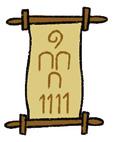
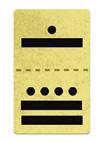









2 a) 2 300 Th = 23 000 H b) 4 800 T = 48 Th
c) 2 HTh = 200 Th d) 700 Th = 70 TTh
3 a) 1 h 13 min 27 s → 4 407 s
b) 587 min → 9 h 47 min
c) 6 542 s → 1 h 49 min 2 s
Multiples and divisors
4 a) Yes, 132 is a multiple of 11 (132 = 12 · 11) and 11 is a divisor of 132.
b) Yes, 574 is a multiple of 14 (574 = 41 · 14). However, 27 is not a divisor of 1 542 (1 542 = 27 · 57 + 3).
5 a) The first five multiples of 10: 10, 20, 30, 40 and 50
b) The first five multiples of 13: 13, 26, 39, 52 and 65
c) All the divisors of 23: 1 and 23
d) All the divisors of 32: 1, 2, 4, 8, 16 and 32
6 a) The number is 60.
b) The number is 12.
Prime and composite numbers
7 a) The first ten prime numbers: 2, 3, 5, 7, 11, 13, 17, 19, 23 and 29
b) The biggest two-digit prime number and the smallest three-digit prime number: 97 and 101
9
Lowest common multiple and greatest common divisor
10 a) LCM (2, 3) = 6
c) LCM (4, 10) = 20
e) LCM (6, 12) = 12
11 a) GCD (4, 8) = 4
c) GCD (10, 15) = 5
b) LCM (6, 9) = 18
d) LCM (6, 10) = 30
f) LCM (12, 18) = 36
b) GCD (6, 9) = 3
d) GCD (12, 16) = 4
e) GCD (16, 24) = 8 f) GCD (18, 24) = 6
12 a) LCM (24, 36) = 72
c) LCM (28, 42) = 84
b) GCD (24, 36) = 12
d) GCD (28, 42) = 14
e) LCM (45, 75) = 225 f) GCD (45, 75) = 15
Integers
13 From smallest to biggest: –16 < –11 < –7 < –6 < –3 < +4 < +8 < +12 < +15
Adding and subtracting integers
14 a) 5 – 8 – 4 + 3 – 6 + 9 = –1 b) 10 – 11 + 7 – 13 + 15 – 6 = 2
c) 9 – 2 – 7 – 11 + 3 + 18 – 10 = 0 d) –7 – 15 + 8 + 10 – 9 – 6 + 11 = –8
15 a) 15 + (8 – 6) = 17
c) 6 + (2 – 8) – (1 + 7) = –8
Multiplying and dividing integers
16 a) (– 4) · (+7) = –28
c) (– 6) · (–8) = +48
e) (+10) · (+5) = +50
g) (–9) · (–5) = +45
17 a) (–3) · (+5) = –15
c) (–8) · (–4) = +32
e) (+20) · (+3) = +60
Combined operations with integers
18 a) 5 – 4 · 3 = –7
c) 4 · 5 – 6 · 3 = 2
e) 16 – 4 · 7 + 2 · 5 – 19 = –21
19 a) 7 · (6 – 4) = 14
c) (–3) · (7 – 6) = –3
b) 11 – (2 + 8) = 1
d) (13 – 11) – (10 + 7) – (2 – 10) = –7
b) (–21) : (+3) = –7
d) (+30) : (+5) = +6
f) (– 63) : (–9) = +7
h) (+112) : (–14) = –8
b) (–28) : (+7) = –4
d) (+50) : (+5) = +10
f) (–56) : (–7) = +8
b) 2 · 9 – 7 = 11
d) 2 · 8 – 4 · 5 = – 4
f) 5 · 6 – 21 – 3 · 7 + 12 = 0
b) (7 – 10) · 2 = –6
d) (10 – 4) · (–2) = –12
e) 6 · (5 – 3) + 2 · (2 – 7) = 2 f) 5 · (–3 – 1) – 4 · (9 – 7) = –28
Powers of integers
20 a) (–5)4 = 625 b) (+4)5 = 1 024 c) (– 6)3 = –216
d) (+7)3 = 343 e) (–8)2 = 64 f) (–10)7 = –10 000 000
g) (+3)0 = 1 h) (–6)0 = 1 i) (–10)0 = 1
21 a) 104 : 54 = 24 b) 127 : (– 4)7 = –37 c) (–9)6 : 36 = 36
d) 26 · 26 = 212 e) (– 4)5 · (–2)5 = 215 f) 24 · (–5)4 = 104
22 a) x2 · x4 = x 6 b) m4 · m3 = m7 c) x6 · x = x 7 d) m8 : m5 = m3 e) x3 : x = x 2
m5 :
5 = m0 = 1 g) (x3)2 = x 6 h) (m5)2 = m10 i) (x2)2 = x 4
Square roots of integers
23 a) ±7
d) ±15
g) ±50
b) ±7
e) ±15
c) Does not exist.
f) Does not exist.
h) ±50 i) Does not exist.
TRAINING AND PRACTICE
24 1010 - 1011 - 1100 - 1101 - 1110 - 1111 - 10000 - 10001 - 10010 - 10011
25 a) The multiples of 2: 66, 90, 156, 220, 1 000
b) The multiples of 3: 66, 90, 105, 156, 315, 825, 2 007, 5 511
c) The multiples of 5: 90, 105, 220, 315, 825, 1 000, 6 005
d) The multiples of 11: 66, 220, 4 829, 5 511
26 a) The prime numbers between 50 and 60: 53 and 59
b) The prime numbers between 80 and 100: 83, 89 and 97
c)The first three prime numbers greater than 100: 101, 103 and 107
27 a) LCM (12, 15) = 60
c) LCM (48, 54) = 432
e) LCM (6, 10, 15) = 30
28 a) GCD (36, 45) = 9
c) GCD (105, 120) = 15
e) GCD (8, 12, 16) = 4
b) LCM (24, 60) = 120
d) LCM (90, 150) = 450
f) LCM (8, 12, 18) = 72
b) GCD (48, 72) = 24
d) GCD (135, 180) = 45
f) GCD (45, 60, 105) = 15
29 P = (–2, –3) Q = (–3, 0) M = (3, 2) N = (4, –1)
N = (2, –3) P = (–4, –5) Q = (–5, –2)
30 a) 16 + [3 – 9 – (11 – 4)] = 3
b) 8 – [(6 – 9) – (7 – 13)] = 5
c) (6 – 15) – [1 – (1 – 5 – 4)] = –18
d) (2 – 12 + 7) – [(4 – 10) – (5 – 15)] = –7
e) [9 – (5 – 17)] – [11 – (6 – 13)] = 3
31 a) (–2) · [(+3) · (–2)] = 12 b) [(+5) · (–3)] · (+2) = –30
c) (+6) : [(–30) : (–15)] = 3
e) (–5) · [(–18) : (– 6)] = –15
g) [(–21) : 7] · [8 : (– 4)] = 6
32 a) 17 – 6 · 2 = 5
c) (–10) – 2 · (–3) = –4
e) (–3) · (+5) + (–2) = –17
d) [(+40) : (– 4)] : (–5) = 2
f) [(–8) · (+3)] : (– 4) = 6
h) [6 · (–10)] : [(–5) · 6] = 2
b) (17 – 6) · 2 = 22
d) [(–10) – 2] · (–3) = 36
f) (–3) · [(+5) + (–2)] = –9


SDG commitment
Watch the video for target 3.8. Once students have solved activity 40, highlight some of the harmful health consequences of not getting the recommended amount of sleep, and then hold a class debate on measures that could be taken to guarantee universal health coverage.

Developing thinking
Technique: Think and share with a partner. Ask students to solve activity 47 and then share and explain the solution they got with the partner sitting beside them. It is important that they listen to their partner actively.
THINK, APPLY, EXPRESS
36 A divisor of 427 with two digits: 61
37 It is the number 42.
38 151 - 157 - 163 - 167
39 The number is 300.
SOLVE SIMPLE PROBLEMS
Problems with natural numbers
40 Since a 14-year-old sleeps an average of 10 hours a day, and a 40-year-old sleeps an average of 8 hours, the difference, in a non-leap year, is about 730 hours.
41 a) Each side weighs 180 g. b) There are 6 wooden cubes and 5 marbles.
42 Each fridge weighs 37 kilos. In the first lorry there are 13 fridges and in the second lorry there are 15 fridges.
43 The cable is 180 m long.
44 The sides of the field measure 120 m.
45 There are 12 muffins and mantecados in each bag.
46 Take Action. For example: cubes measuring 15 Ò 15 Ò 15 cm; prisms mesasuring 40 Ò 40 Ò 45 cm.
Problems with integers
47
48 – The number 7 will be used 10 times.
– The number 5 will be used 12 times.
– The number 3 will be used 30 times.
49 Problem solved.
50 The numbers are –2 and 5.
51 The numbers are 24 and –46.





Gamification
anayaeducacion.es Go to the Escape Room and test yourself!

ICT
anayaeducacion.es Answer key for the self-assessment.
THINK A LITTLE MORE
52 There are 248 cupcakes.
53 If there were 10 people, they would pay €13 each. If there were 13 people, they would pay €10 each.
54 The present costs €80.
55 There were €120 in the first account and €–80 in the second account.
Self-assessment
ANSWER KEY
1 a) The first four multiples of 17: 17, 34, 51, 68
b) All the divisors of 72: 1, 2, 3, 4, 6, 8, 9, 12, 18, 24, 36 and 72
2 1 003 = 17 · 59
a) The first multiple of 17 after 1 000 is 1 003.
b) 83, because 83 · 5 = 415.
3 The prime numbers between 20 and 40: 23, 29, 31 and 37
4 Multiples of 2: 990, 6 324
Multiples of 3: 897, 765, 990, 6 324, 7 005
Multiples of 5: 765, 990, 7 005
Multiples of 10: 990
5 a) The largest number that is a divisor of 6, 12, 18 and 24: 6
b) The largest number that is a divisor of 3, 5, 7 and 11: 1
c) The smallest number that is a multiple of 3, 5, 7 and 11: 1 155
d)The smallest number that is a multiple of 6, 12, 18 and 24: 24
6 150 = 2 · 3 · 52
225 = 32 · 52
7 a) GCD (150, 225) = 75 b) LCM (150, 225) = 450
8 a) 6 – 11 + (9 – 13) = –9
2 – (5 – 8) = 5 c) (7 – 15) – (6 – 2) = –12
5 – [2 – (3 – 2)] = 4
9 a) 4 · 5 – 3 · (–2) + 5 · (–8) – 4 · (–3) = –2 b) (10 – 3 · 6) – 2 · [5 + 3 · (4 – 7)] = 0 c) 10 – 10 · [– 6 + 5 · (– 4 + 7 – 3)] = 70
11 221 = 17 · 13 272 = 17 · 16 Each T-shirt costs €17.
12 The sides of each piece of land measure 20 m.
13 They will coincide again after 180 second = 3 minutes.
14 The towers will be the same size at a height of 540 m. 15 The numbers are 10 and –6.




I take action: Analyse how best to fill a space with objects of known dimensions
TEACHING NOTES
The page describes the activity that was outlined at the beginning of the learning experience, and shows an example of how it can be done, based on how to place the load of a lorry, knowing the dimensions of the box and the dimensions of the packages. It is an open-ended, so the students can do the work in another context, in which case the one that appears here can be used as an activity to prepare the students or as a guide to develop the one that the students can decide on. For example:
• Find out the actual dimensions of a van or other transport vehicle. Look on the web or in a department store for the sizes of packing boxes that are offered and choose one. Calculate the maximum number of boxes of that model that will fit in the vehicle, explaining how they should be placed to optimise space
• Think about how you can design the dimensions of the lorry and packing boxes and make a suggestions for sizes that do not waste space.
• Imagine that the cheeses in the example on the first page are packed in boxes and the boxes dry on the lorry. Make a proposal for the size of the boxes, how to place the cheeses, etc.
ANSWER KEY
•
• The maximum number of boxes that can fit in the lorry is 3 840, which is obtained by orienting the boxes so:
– The 40 cm edge parallel to the width of the lorry (320 : 40 = 8 boxes per row).
– The 30 cm edge upwards (240 : 30 = 8 boxes per column).
– The 25 cm edge parallel to the length of the lorry (1 500 : 25 = 60 boxes per row).
NOTES
• Assuming that the boxes were to stand upright (with the 25 cm vertical edge), there would be room for 3 600 boxes. With the 40 cm edge across the width of the lorry and the 30 cm edge along the length.
• The maximum common divisor of 320, 240 and 1 500 is 20. So, for example, a cube shaped box with an edge of 20 cm would be the largest of this format, which would exactly fit in the lorry. This way, 16 × 12 × 75 = 14 400 boxes would bit in the lorry.
• To occupy the entire space, the dimensions of the boxes must be divisors of 320, 240 and 1 500 at the same time, or respectively.
• For example: Boxes of 40 × 60 × 50, placed widthwise, heightwise and lengthwise, respectively.
NOW, IT’S YOUR TURN... Open answer.
All rights reserved. No part of this publication may be reproduced, stored in a retrieval system, or transmitted, in any form or by any means, electronic, mechanical, photocopying, recording, or otherwise, without the prior permission of the publishers.
